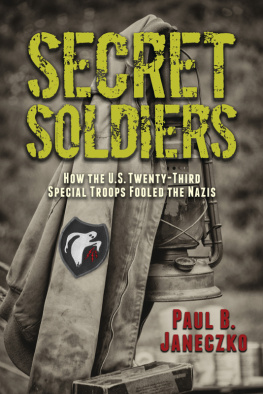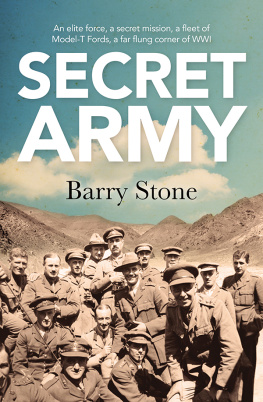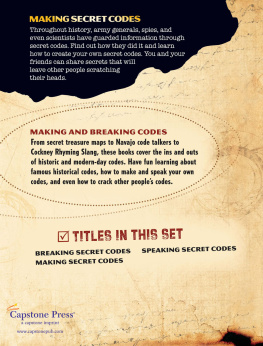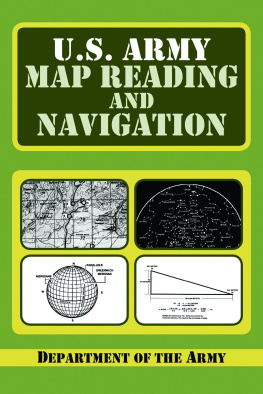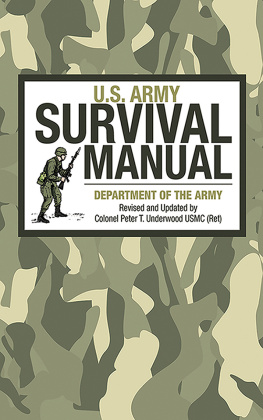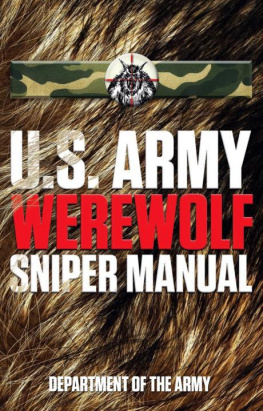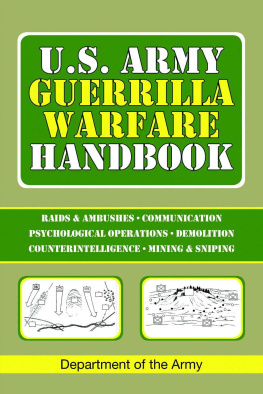IRA - The secret army: the IRA
Here you can read online IRA - The secret army: the IRA full text of the book (entire story) in english for free. Download pdf and epub, get meaning, cover and reviews about this ebook. City: Irland;New Brunswick;N.J;Nordirland, year: 2008;2017, publisher: Taylor and Francis;Transaction, genre: Art. Description of the work, (preface) as well as reviews are available. Best literature library LitArk.com created for fans of good reading and offers a wide selection of genres:
Romance novel
Science fiction
Adventure
Detective
Science
History
Home and family
Prose
Art
Politics
Computer
Non-fiction
Religion
Business
Children
Humor
Choose a favorite category and find really read worthwhile books. Enjoy immersion in the world of imagination, feel the emotions of the characters or learn something new for yourself, make an fascinating discovery.

- Book:The secret army: the IRA
- Author:
- Publisher:Taylor and Francis;Transaction
- Genre:
- Year:2008;2017
- City:Irland;New Brunswick;N.J;Nordirland
- Rating:3 / 5
- Favourites:Add to favourites
- Your mark:
- 60
- 1
- 2
- 3
- 4
- 5
The secret army: the IRA: summary, description and annotation
We offer to read an annotation, description, summary or preface (depends on what the author of the book "The secret army: the IRA" wrote himself). If you haven't found the necessary information about the book — write in the comments, we will try to find it.
IRA: author's other books
Who wrote The secret army: the IRA? Find out the surname, the name of the author of the book and a list of all author's works by series.
The secret army: the IRA — read online for free the complete book (whole text) full work
Below is the text of the book, divided by pages. System saving the place of the last page read, allows you to conveniently read the book "The secret army: the IRA" online for free, without having to search again every time where you left off. Put a bookmark, and you can go to the page where you finished reading at any time.
Font size:
Interval:
Bookmark:
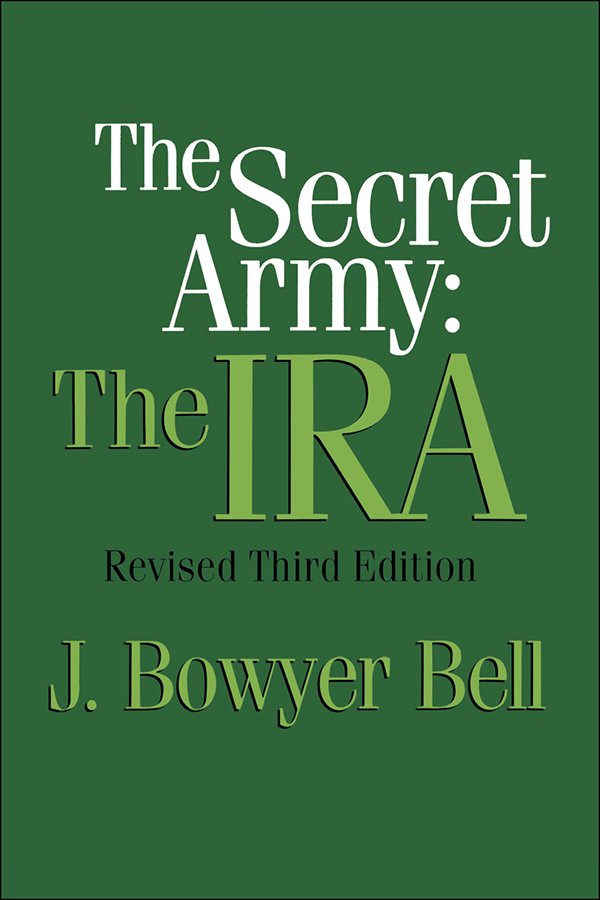
The Secret Army: The IRA
Revised Third Edition
J. Bowyer Bell

First published 1997 by Transaction Publishers
Published 2017 by Routledge
2 Park Square, Milton Park, Abingdon, Oxon OX14 4RN
711 Third Avenue, New York, NY 10017, USA
Routledge is an imprint of the Taylor & Francis Group, an informa business
Copyright 1997 by Taylor & Francis.
All rights reserved. No part of this book may be reprinted or reproduced or utilised in any form or by any electronic, mechanical, or other means, now known or hereafter invented, including photocopying and recording, or in any information storage or retrieval system, without permission in writing from the publishers.
Notice:
Product or corporate names may be trademarks or registered trademarks, and are used only for identification and explanation without intent to infringe.
Library of Congress Catalog Number: 96-3011
Library of Congress Cataloging-in-Publication Data
Bell, J. Bowyer, 19312003
The secret army: the IRA / J. Bowyer Bellrev. 3rd ed.
p. cm.
Includes bibliographical references (p. ) and index.
ISBN 1-56000-901-2 (pbk.: alk. paper)
1. Irish Republican ArmyHistory. 2. IrelandHistory, Military20th century. 3. Northern IrelandHistory, Military1969- 4. ViolenceIrelandHistory20th century. I. Title.
DA949.B43 1996
941.5082dc20
96-3011
CIP
ISBN 13: 978-1-56000-901-6 (pbk)
This book is for three men who at different times tried to give me some insight into the subtle mysteries of history. I should like to think that their patience and their training if not completely successful in my case has, nevertheless, not gone for nothing.
William A. Jenks
Eber Malcolm Carroll
Harold T. Parker
With this addition to The Secret Army, I should like to think that what has become a lifetime concern with the IRA will not require an additional chap ter: I am, after all, running out of time. Certainly with the initiation of the peace process in Ireland, the future of the IRA will evolve within a quite different context. There may yet be a role and a mission or, like the IRB, the faithful with other effective means to act may simply disappear as subject, disappear amid flickers of rumors, faint, fading, and gone without trumpets. Whatever, I have again run my course; I have brought in prose the secret army to the end game.
If once I seemed to write more and more about less and lesscertainly about fewer and fewernow with the onset of the Troubles the reverse is the case. My book The Irish Troubles, A Generation of Violence, 19671992, for example, ran to 800 pages and then many aspects of the IRA escaped notice. In fact in order to limit length I have cut the cited sourcesquotations without notes can be assumed to come from the daily press, usually the Irish Times. And I have not attempted to list fifteen years of interviews. And, of course, I have lived through much of the Troubles since 1979, attended some of the events described, and talked with many of the playersthis is the foundation of all else and cannot easily be noted in traditional scholarly scaffolding. Thus, the academic formalities have been kept to a minimum.
The last generation has been filled with actors and actions, the spectacular and the tragicsimply a list of IRA campaign losses would be longer than the active roll in 1965 when I first began my Irish Republican adventures. Even at that, in the earlier periods there are names missing from those earlier chapters, oversightsfor example, Mick Ryan, active throughout the Six Counties in 19561962 gets no proper mention. This is even more so during the present Troubles. Some Republicans and/or their relatives found my comments misguided and others the coverage excessive or scant, biased or limited. No matter; as was the case of previous editions, there have been no corrections, additions, or adjustments up to 1979. Despite the lapses the text stands as written, as close to reality as I am likely to come.
All the old sources are dying. No one from 1916 is left and few before the war years and the Curragh are left. Those who came later now gather at Republican funerals for those who died, not as so many have in active service, but at the end of their coursesuddenly, unexpectedly an old guard, almost one with the Tan years, part of history. Those who are the children of the Troubles often do not want to be troubled by a historian, suspect not without reason, their interest best served by silence.
If for a historian all men are dead, then there are among the living those who do not want to take that risk. As history comes closer to the present, as the text becomes more contemporary, there are, then, greater difficulties in writing not simply about a secret organization but a subversive one engaged in an armed struggle. History and current events become muddled. The written word has a real life and may tinker with events. While I have always felt that all I wanted to know was what I needed to know, the truth is that I wanted to know everything even when I could not use the data; and once I had this data in hand, I often wished I knew nothing. I still do not now know all that is needed, but then no one does and no one is likely to do so. A protracted armed struggle in self-defense devours its own trail. Not until the endand there has been no end after two centuriescan there be time for disinterested reflection by the involved who must as well protect the living and interpret the dead. In Ireland history matters, as authorization for a campaign, as wanted list of suspects, as buttress and weapon: no text is academic.
Not that this had kept me from pursuing the secret army, not only in Ireland but also wherever I wentfrom Africa and the Middle East to Washington and London. Over the years a remarkable number of people turned up in New York, some unannounced and in recent times some live and in color on television as well as in person. The result again had been thousands and thousands of hours of conversations, including more formal interviews from the House of Commons to seedy hotel rooms in the Middle East. And there was as well the enormous literature of the Troubleshappy is the country that does not attract social scientistsand the daily diet of newspapers and wire reports and rumors.
If Ireland has generated a library of analysis, in most ways the secret army remains secret, beyond interviews, the methodologies of scholars, the questions and explanations; for the Republican universe is one of faith and my limited entry visa allows, at best, observation. Obviously much operational data is not just hidden, but probably hidden for good. Much information is unobtainable as the few who have it die before talking to anyone; and most at the center of the circle are not going to talk in any case, now or later. Still, much is known and much can be published, certainly enough for this addition to the history of a secret army.
During my years in Ireland, accumulating material, making notes, visiting people, and forever talking, there have always been those to offer aid and comfortscholars and officials, Republicans and those who abhor them, all sorts. There have been seminars and lectures, editors and publishers, unexpected encounters and hundreds to thanksome who are pleased not to be cited by name. And those who helped me at the start were often about for this edition. Tony Meade manages to make his way north from Cork every year or so to maintain touch. Oliver Snoddy, no longer at the National Museum but still at the center of a web of contacts, older and wiser, a grandfather twice over, once president of the Gaelic League and now a publisher of Irish works, for a generation, has offered aid and comfort. And Charlie Murphy and Carmel, friends, at times neighbors, have kept the faith and made Dublin for me and mine a comfort.
Font size:
Interval:
Bookmark:
Similar books «The secret army: the IRA»
Look at similar books to The secret army: the IRA. We have selected literature similar in name and meaning in the hope of providing readers with more options to find new, interesting, not yet read works.
Discussion, reviews of the book The secret army: the IRA and just readers' own opinions. Leave your comments, write what you think about the work, its meaning or the main characters. Specify what exactly you liked and what you didn't like, and why you think so.

